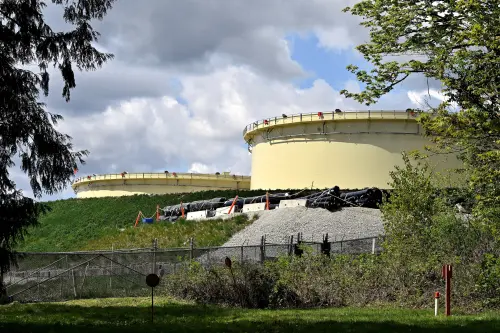Introduction
Canada's Trans Mountain oil pipeline has adjusted its forecasts downward, anticipating a slower-than-expected increase in oil flows over the next three years, as indicated in recent documentation.Context
The lower forecasts, recently submitted to the Canada Energy Regulator, reflect oil companies' reluctance to pay the higher tolls imposed by the government-owned Trans Mountain for shipping oil. Analysts report that 20% of the pipeline's capacity dedicated to spot shipments is underutilized, attributed to shipping costs exceeding those of the Enbridge Mainline system, which is North America's largest crude pipeline network connecting western Canada to markets in Eastern Canada and the U.S. Midwest.Developments
These revised estimates cast doubts on the pipeline's ability to generate sufficient revenue and attract private sector interest, as Ottawa aims to sell the pipeline in the future. Additionally, the figures reveal the ongoing challenge of diversifying Canadian oil exports beyond the U.S., which currently consumes 90% of Canadian crude. As Canada's only operational east-west pipeline, Trans Mountain serves as the sole channel to Asian and non-U.S. markets.The expanded pipeline, capable of transporting 890,000 barrels per day, went into operation in May 2024. Initially, Trans Mountain anticipated 96% utilization from 2025 onward. However, the first eight months yielded only 18,500 barrels per day in spot shipments, falling short of the expected 30,600 barrels, leading to an overall utilization rate of 77% for 2024 compared to an earlier forecast of 83%.
Currently, the new projections estimate the pipeline will operate at 84% capacity this year, 88% in 2026, and 92% in 2027, with 96% utilization now not expected until 2028.
A Trans Mountain spokesperson noted that spot shipments are influenced by market factors such as domestic crude production, global pricing differentials, and marine freight rates.
Compounding these challenges are massive construction budget overruns, with total costs soaring to approximately C$34 billion, nearly five times the initial 2017 estimate. While 70% of these overruns will be absorbed by Trans Mountain, over $9 billion constitutes "uncapped costs" that will drive up toll rates based on an agreement established over a decade ago.
Consequently, shippers are now paying nearly double the estimated tolls from 2017, with spot shippers facing even higher rates. Key contracted shippers such as Canadian Natural Resources Ltd and Cenovus Energy have expressed opposition to these hikes, with a regulatory hearing scheduled this year to assess their fairness.
In comparison, the Enbridge Mainline, which transports crude to the U.S. Midwest and Eastern Canada, offers 100% spot capacity with toll rates approximately half of those charged by Trans Mountain. An Enbridge spokesperson mentioned that the demand for capacity on their Mainline has consistently exceeded supply since Trans Mountain's expansion.
Analyst Rory Johnston pointed out that the revised forecasts highlight that transportation costs make shipping through Trans Mountain "too expensive" for certain producers. This situation underscores the broader difficulties of attracting private investors in the sector.
Experts believe that usage rates for Trans Mountain could surge if the U.S. imposes tariffs on Canadian oil imports. Richard Masson from the University of Calgary noted that the situation in the U.S. could significantly alter the current dynamics.
With the reduction in capacity forecasts, Trans Mountain also predicts lower revenue figures over the next three years, adjusting projections to $2.7 billion in 2025, $2.9 billion in 2026, and $3.0 billion in 2027, down from earlier estimates.
